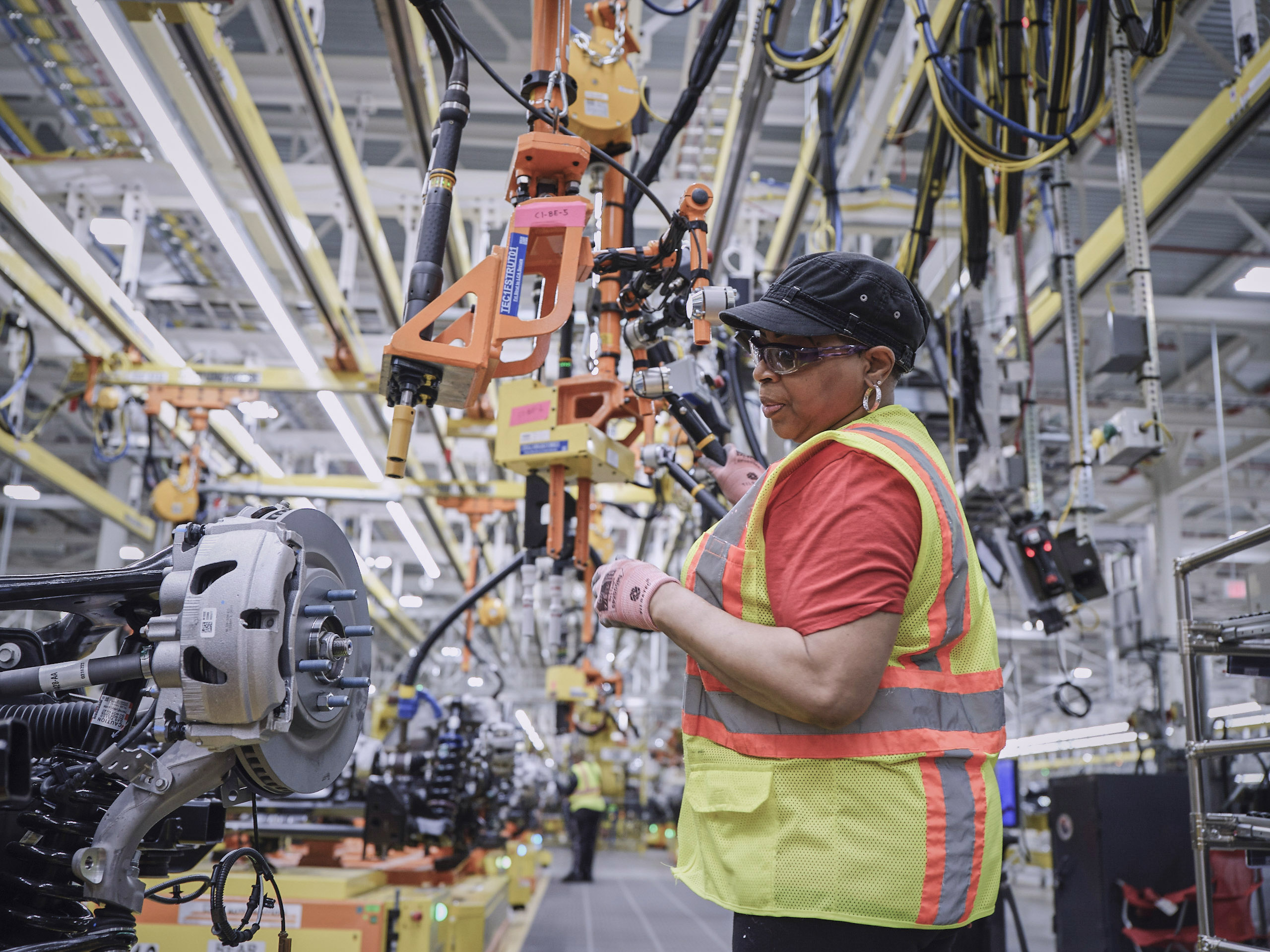
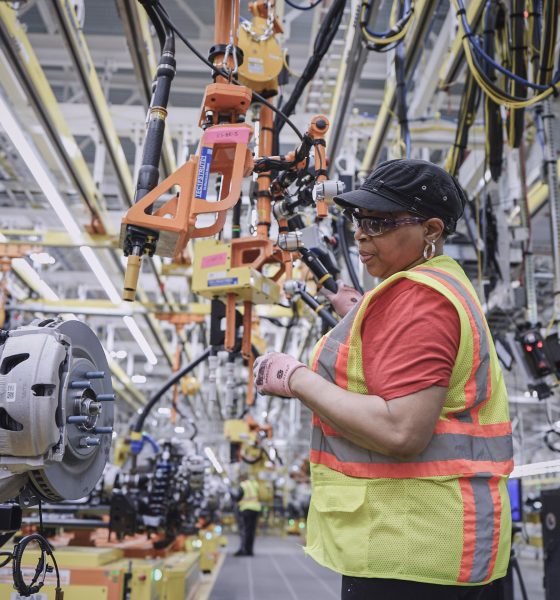
News
Ford to cut 3,000 jobs globally in ‘changing and reshaping’ of operations
Ford Motor Company said it would cut 3,000 jobs in a letter to employees that was obtained by Automotive News. The affected employees will be informed this week.
“Building this future requires changing and reshaping virtually all aspects of the way we have operated for more than a century,” CEO Jim Farley and Ford said in the letter. “It requires focus, clarity, and speed. And, as we have discussed in recent months, it means redeploying resources and addressing our cost structure, which is uncompetitive versus traditional and new competitors.”
The 3,000 jobs affected consist of 2,000 salaried positions and 1,000 agency jobs, the Automotive News report said. Ford confirmed the authenticity of the letter.
Farley detailed not only the elimination of some positions but also the “reorganization and simplifying of functions” within the company. Ford made the decision earlier this year to separate its ICE and EV businesses into “divisions.” This helped organize projects based on powertrains, as ICE vehicles fell under “Ford Blue,” while EVs are considered “Ford Model e” projects.
Ford is arguably the most committed to an electrified future among legacy automakers. While General Motors has also made strides toward transitioning to EVs, Ford has been more consistent in terms of ramping production and scaling its products. The Mustang Mach-E and Ford F-150 Lightning are already successful product launches from Ford, and the company is making any changes necessary to stay on schedule with its transition to electric vehicles.
“None of this changes the fact that this is a difficult and emotional time,” Farley said in the letter. “The people leaving the company this week are friends and coworkers and we want to thank them for all they have contributed to Ford. We have a duty to care for and support those affected – and we will live up to this duty — providing not only benefits but significant help to find new career opportunities.”
Last week, Ford sold green bonds to fund its electric vehicle projects, Bloomberg reported. Ford sold 1.75 billion in debt, which was expected to mature in 10 years, sources said. These bonds were sold to help fund and finance new and existing green projects.
Ford was down 4.88 percent at the time of writing, trading at $15.10 a share at 11:48 a.m. in New York.
Disclosure: Joey Klender does not own $F stock.
I’d love to hear from you! If you have any comments, concerns, or questions, please email me at joey@teslarati.com. You can also reach me on Twitter @KlenderJoey, or if you have news tips, you can email us at tips@teslarati.com.

Cybertruck
Tesla made a change to the Cybertruck and nobody noticed
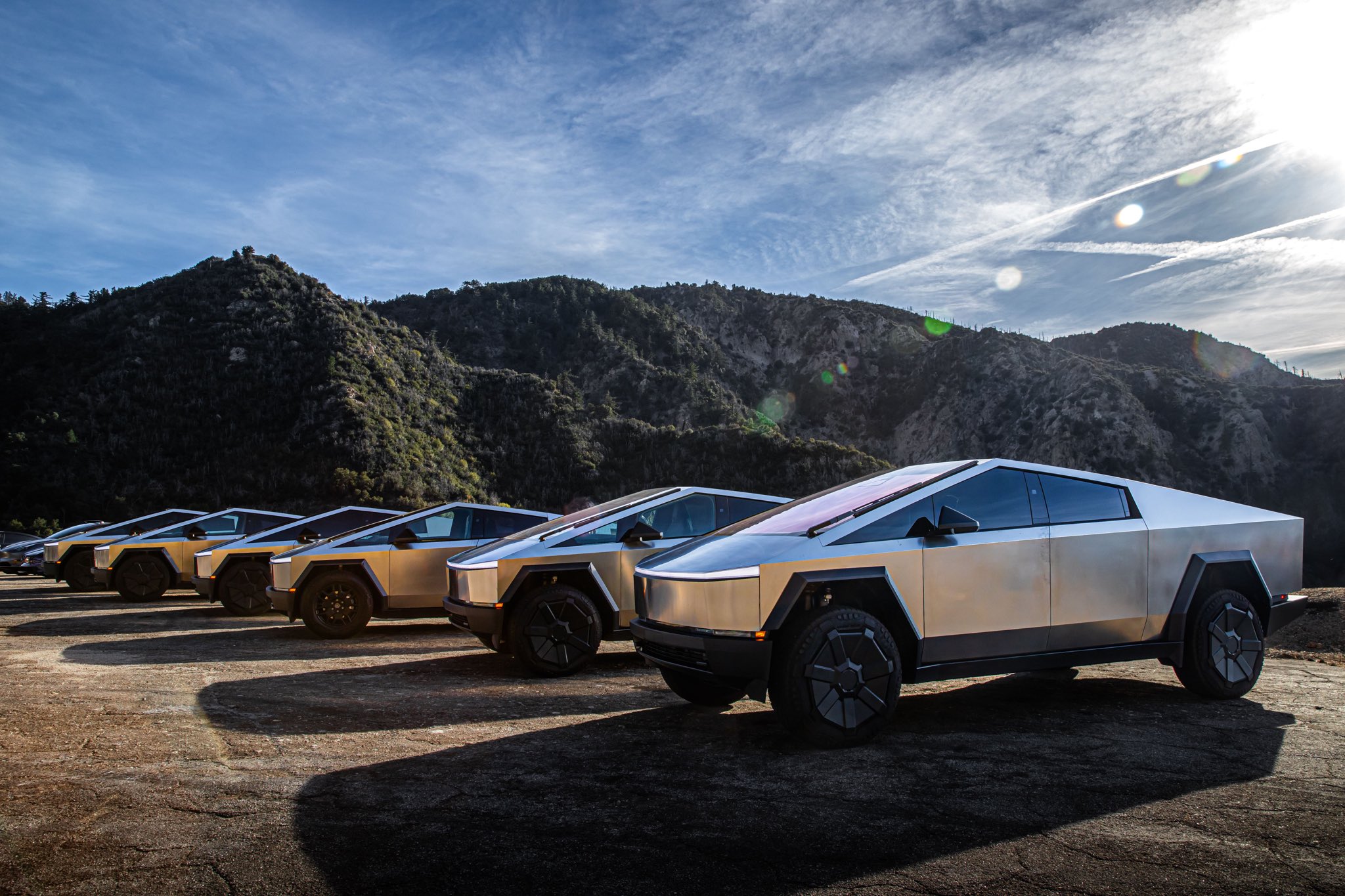
Tesla made a change to the Cybertruck, and nobody noticed. But to be fair, nobody could have, but it was revealed by the program’s lead engineer that it was aimed toward simplifying manufacturing through a minor change in casting.
After the Cybertruck was given a Top Safety Pick+ award by the Insurance Institute for Highway Safety (IIHS), for its reputation as the safest pickup on the market, some wondered what had changed about the vehicle.
Tesla makes changes to its vehicles routinely through Over-the-Air software updates, but aesthetic changes are relatively rare. Vehicles go through refreshes every few years, as the Model 3 and Model Y did earlier this year. However, the Cybertruck is one of the vehicles that has not changed much since its launch in late 2023, but it has gone through some minor changes.
Most recently, Wes Morrill, the Cybertruck program’s Lead Engineer, stated that the company had made a minor change to the casting of the all-electric pickup for manufacturing purposes. This change took place in April:
We made a minor change on the casting for manufacturability in April. Our Internal testing shows no difference in crash result but IIHS only officially tested the latest version
— Wes (@wmorrill3) December 17, 2025
The change is among the most subtle that can be made, but it makes a massive difference in manufacturing efficiency, build quality, and scalability.
Morrill revealed Tesla’s internal testing showed no difference in crash testing results performed by the IIHS.
The 2025 Cybertruck received stellar ratings in each of the required testing scenarios and categories. The Top Safety Pick+ award is only given if it excels in rigorous crash tests. This requires ‘Good’ ratings in updated small and moderate overlap front, side, roof, and head restraints.
Additionally, it must have advanced front crash prevention in both day and night. Most importantly, the vehicle must have a ‘Good’ or ‘Acceptable’ headlights standard on all trims, with the “+ ” specifically demanding the toughest new updated moderate overlap test that checks rear-seat passenger protection alongside driver safety.
News
Tesla enters interesting situation with Full Self-Driving in California
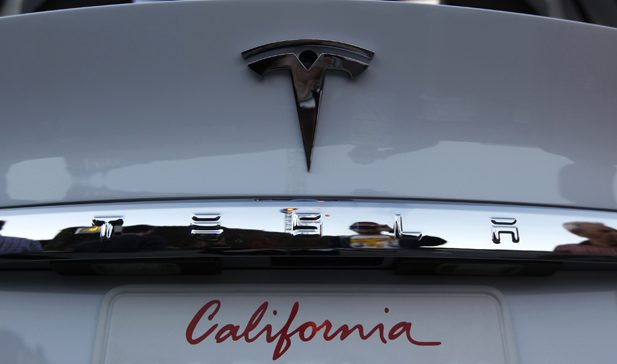
Tesla has entered an interesting situation with its Full Self-Driving suite in California, as the State’s Department of Motor Vehicles had adopted an order for a suspension of the company’s sales license, but it immediately put it on hold.
The company has been granted a reprieve as the DMV is giving Tesla an opportunity to “remedy the situation.” After the suspension was recommended for 30 days as a penalty, the DMV said it would give Tesla 90 days to allow the company to come into compliance.
The DMV is accusing Tesla of misleading consumers by using words like Autopilot and Full Self-Driving on its advanced driver assistance (ADAS) features.
The State’s DMV Director, Steve Gordon, said that he hoped “Tesla will find a way to get these misleading statements corrected.” However, Tesla responded to the story on Tuesday, stating that this was a “consumer protection” order for the company using the term Autopilot.
It said “not one single customer came forward to say there’s a problem.” It added that “sales in California will continue uninterrupted.”
This was a “consumer protection” order about the use of the term “Autopilot” in a case where not one single customer came forward to say there’s a problem.
Sales in California will continue uninterrupted.
— Tesla North America (@tesla_na) December 17, 2025
Tesla has used the terms Autopilot and Full Self-Driving for years, but has added the term “(Supervised)” to the end of the FSD suite, hoping to remedy some of the potential issues that regulators in various areas might have with the labeling of the program.
It might not be too long before Tesla stops catching flak for using the Full Self-Driving name to describe its platform.
Tesla Robotaxi goes driverless as Musk confirms Safety Monitor removal testing
The Robotaxi suite has continued to improve, and this week, vehicles were spotted in Austin without any occupants. CEO Elon Musk would later confirm that Tesla had started testing driverless rides in Austin, hoping to launch rides without any supervision by the end of the year.
Investor's Corner
Tesla stock closes at all-time high on heels of Robotaxi progress
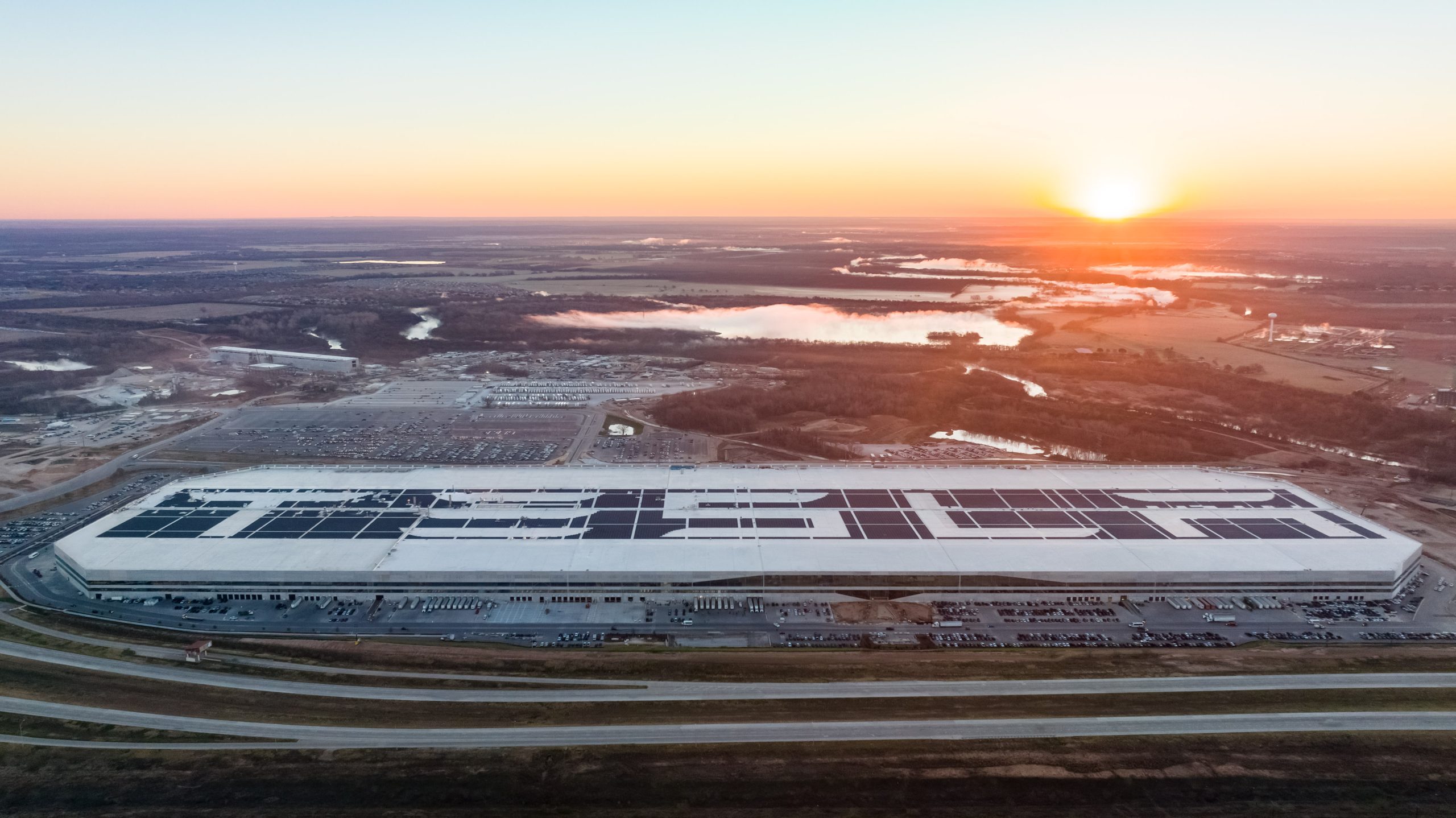
Tesla stock (NASDAQ: TSLA) closed at an all-time high on Tuesday, jumping over 3 percent during the day and finishing at $489.88.
The price beats the previous record close, which was $479.86.
Shares have had a crazy year, dipping more than 40 percent from the start of the year. The stock then started to recover once again around late April, when its price started to climb back up from the low $200 level.
This week, Tesla started to climb toward its highest levels ever, as it was revealed on Sunday that the company was testing driverless Robotaxis in Austin. The spike in value pushed the company’s valuation to $1.63 trillion.
Tesla Robotaxi goes driverless as Musk confirms Safety Monitor removal testing
It is the seventh-most valuable company on the market currently, trailing Nvidia, Apple, Alphabet (Google), Microsoft, Amazon, and Meta.
Shares closed up $14.57 today, up over 3 percent.
The stock has gone through a lot this year, as previously mentioned. Shares tumbled in Q1 due to CEO Elon Musk’s involvement with the Department of Government Efficiency (DOGE), which pulled his attention away from his companies and left a major overhang on their valuations.
However, things started to rebound halfway through the year, and as the government started to phase out the $7,500 tax credit, demand spiked as consumers tried to take advantage of it.
Q3 deliveries were the highest in company history, and Tesla responded to the loss of the tax credit with the launch of the Model 3 and Model Y Standard.
Additionally, analysts have announced high expectations this week for the company on Wall Street as Robotaxi continues to be the focus. With autonomy within Tesla’s sights, things are moving in the direction of Robotaxi being a major catalyst for growth on the Street in the coming year.








